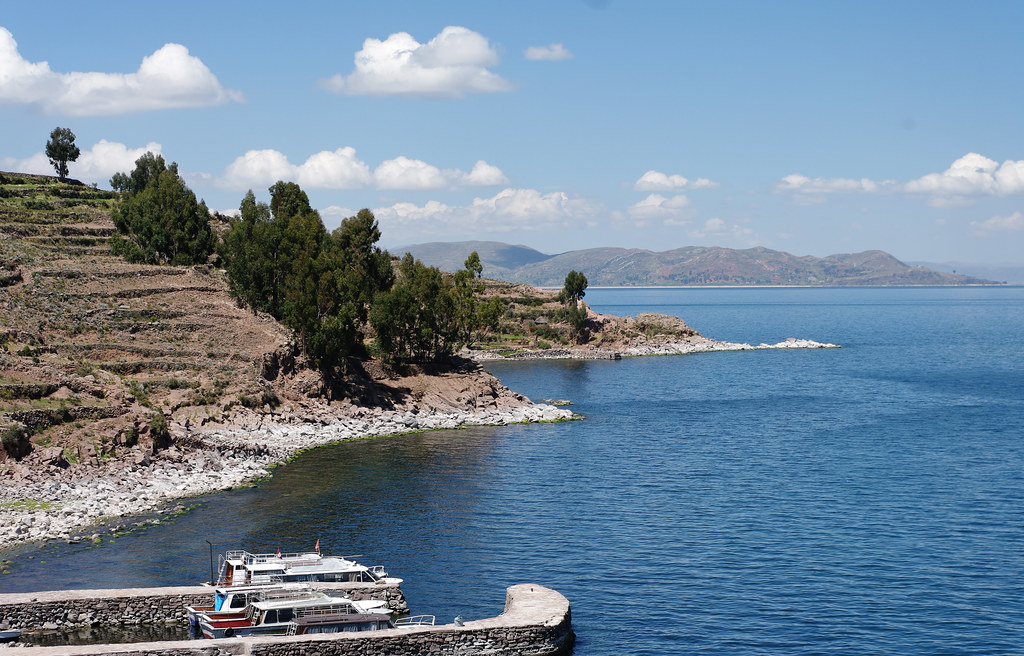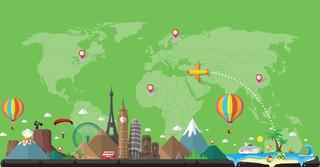One week of backpacking on the sacred land of the Incas.
Distrito de Lima, Miraflores
The Plaza Mayor or Plaza de Armas of Lima, is the birthplace of the city of Lima, as well as the core of the city. Located in the Historic Centre of Lima, it is surrounded by the Government Palace, Cathedral of Lima, Archbishop's Palace of Lima, the Municipal Palace, and the Palace of the Union. You can watch the changing of guards here at 12PM.
Convento de San Francisco is the Spanish name for Saint Francis Monastery located in Lima, Peru , south of Parque la Muralla and one block northeast from the Plaza Mayor. The church and convent are part of the Historic Centre of Lima, which was added to the UNESCO World Heritage List in 1991. Aside from a church and monestery it also contains a library and catacombs. Discovered in 1943, the catacombs contain thousand of skulls and bones, having served as a burial-place until 1808, when the city cemetery was opened outside Lima. It is estimated that 25,000 bodies were laid to rest there.
Miraflores is a district of the Lima Province in Peru. It is an exclusive residential and upscale shopping district south of downtown Lima. It is also one of the most affluent districts that make up the city of Lima. It has various hotels, restaurants, bars, nightclubs, and department stores.
Cusco
The Cathedral Basilica of the Assumption of the Virgin, also known as Cusco Cathedral, is the mother church of the Roman Catholic Archdiocese of Cusco. The cathedral is located on the Plaza de Armas. Building was completed in 1654, almost a hundred years after construction began. Adjacent and joined to the cathedral is the smaller Iglesia del Triunfo, the first Christian church to be built in Cusco. The Iglesia de la Compania de Jesus, also on the Plaza de Armas, was built at a similar time as the cathedral.
Qorikancha (originally named Inti Kancha or Inti Wasi) was the most important temple in the Inca Empire, dedicated primarily to Inti, the Sun God. It was one of the most revered temples of the capital city of Cusco. The walls were once covered in sheets of solid gold, and its adjacent courtyard was filled with golden statues.
Sacred Valley
The Sacred Valley of the Incas is a valley in the Andes of Peru, 20 kilometres (12 mi) at its closest north of the Inca capital of Cusco. It was incorporated slowly into the incipient Inca Empire during the period from 1000 to 1400 CE. It is recommended to purchase a full-day bus tour to visit the Sacred Valley. On the tour, you will visit the handicrafts market in Pisac, enjoy an authentic Peruvian lunch in a local restaurant and explore the ancient ruins of Ollantaytambo. Many travelers who plan to go to Machu Picchu next get off at Ollantaytambo train station to catch a late afternoon train to avoid returning to Cusco again.
Machu Picchu, Aguas Calientes
Machu Picchu is a 15th-century Inca citadel situated on a mountain ridge 2,430 metres (7,970 ft) above sea level. Most archaeologists believe that Machu Picchu was built as an estate for the Inca emperor Pachacuti (1438–1472). It is the most familiar icon of Inca civilization. The Incas built the estate around 1450 but abandoned it a century later at the time of the Spanish Conquest. Although known locally, it was not known to the Spanish during the colonial period and remained unknown to the outside world until American historian Hiram Bingham brought it to international attention in 1911. Machu Picchu was declared a UNESCO World Heritage Site in 1983. Since 2011, 2,500 visitors are allowed each day to Machu Picchu. Most travelers go to Machu Picchu early in the morning, and line up at the Town Center bus station by 5am. It is a 20-minute ride from town to the Machu Picchu ruins, tickets are $4.50 one way or $9 round trip,
Studies have suggested that the Sacred Rock might have been used as a site for sacred rituals. It also represents a geographical landmark as the portal of Machu Picchu to Huayna Picchu. Huayna Picchu, or Wayna Picchu, rises over Machu Picchu to the north. Only 400 visitors are allowed each day, so tickets should be purchased in advance. A steep and at times exposed climb leads to the summit. Some portions are slippery and steel cables provide some support during the one-hour climb. There are 3 major temples on the side of the mountain situated at a lower elevation, the Temple of the Moon, Template of the Condor, Temple of Three Windows.
Puno
Lake Titicaca is a large, deep lake in the Andes on the border of Peru and Bolivia. By volume of water and by surface area, it is the largest lake in South America, and often called the highest navigatable lake in the world. On the lake you will find the "floating islands" built by Uros people using totora, a thick reed that grows in the shallow areas of the lake. There are a couple of notable islands on the lake, Amantani and Taquile on the Peruvian side, Isla de la Luna (Island of the Moon) and Islad del Sol (Island of the Sun) on the Bolivian side. To visit the lake, it is recommended to go with a local tour agency, different packages are offered, routs typically range from 1 to 3 days. Some travelers go on to enter Bolivia by bus (Inka Express) from Puno.












.jpg)

.jpg/1024px-Peru_-_Cusco_023_-_Qorikancha_(7084772615).jpg)
.jpg/1024px-Peru_-_Cusco_Sacred_Valley_%26_Incan_Ruins_153_-_steep-sided_Urubama_valley_(6997273576).jpg)
.jpg/640px-Peru_-_Sacred_Valley_%26_Incan_Ruins_228_-_Pisac_(8114893534).jpg)
.jpg/1024px-Peru_-_Cusco_Sacred_Valley_%26_Incan_Ruins_045_-_Moray_(7094833217).jpg)


.jpg/640px-Sacred_Rock_(7914093954).jpg)






